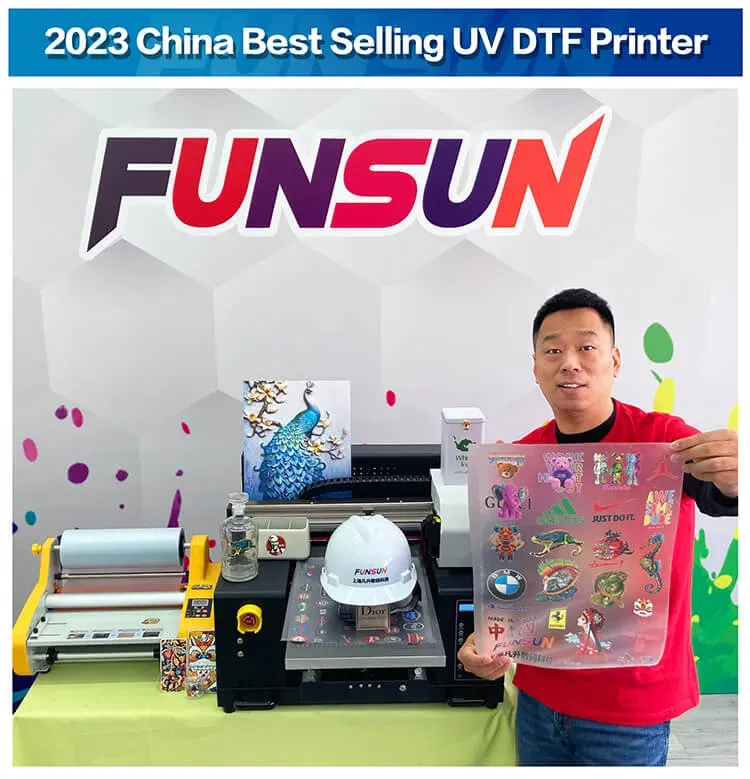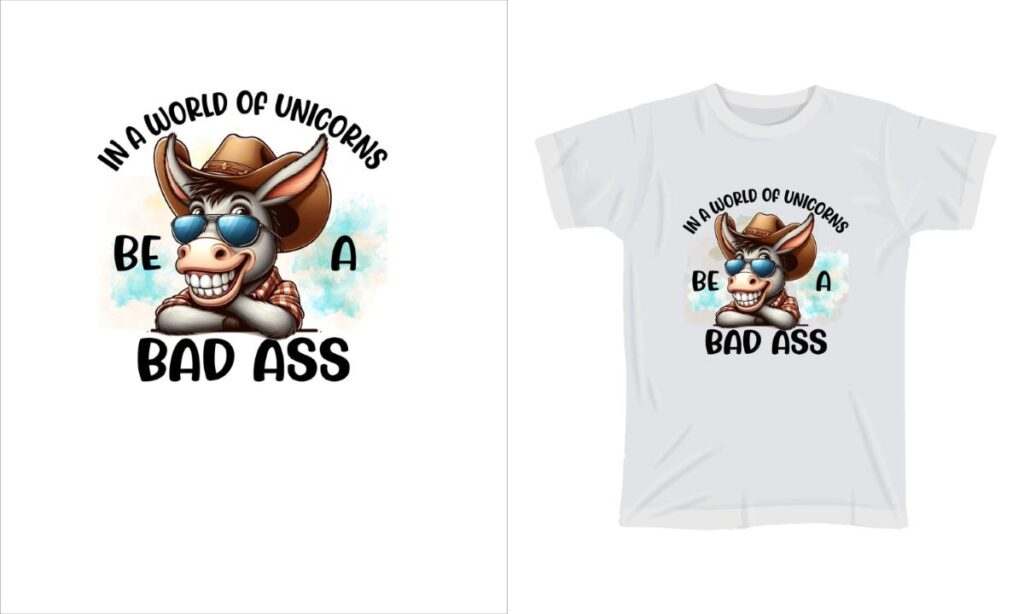UV DTF printing, or Ultraviolet Direct to Film printing, is revolutionizing the way businesses approach their printing needs in a highly competitive landscape. By harnessing the power of UV printing technology, this method allows for the production of stunning, vibrant designs on a variety of materials, from textiles to plastics and more. Unlike traditional printing methods such as screen printing and offset printing, UV DTF ensures immediate drying and impeccable detail, making it an attractive choice for custom products and small batches. As industries continue to evolve, understanding this innovative printing technique and its advantages is essential for businesses looking to enhance their creative output and meet market demands. In this article, we will delve deeper into the comparison between UV DTF and other conventional printing techniques to uncover which method might suit your specific project needs.
When discussing modern printing solutions, one cannot overlook the significance of UV Direct to Film technology, often referred to simply as UV DTF. This innovative approach utilizes ultraviolet light to instantly cure ink, setting it apart from older techniques like screen printing and offset printing. Print enthusiasts and businesses alike are beginning to explore the advantages offered by this cutting-edge technology, which includes superior vibrancy and adaptability across various substrates. Similarly, traditional printing methods have long been established as reliable options, yet they may be limited in versatility and speed. In this article, we will compare the dynamic capabilities of UV DTF with those of established printing techniques, helping you determine the best fit for your unique projects.
The Benefits of UV DTF Printing in Today’s Market
UV DTF printing has rapidly gained popularity due to its numerous advantages over traditional methods. One of the standout features is its ability to produce stunning, high-quality prints that are vibrant and eye-catching. Unlike traditional printing techniques like screen printing and offset printing, UV DTF printing allows for a more complex color range and achieves excellent detail, making it ideal for intricate designs. This high-quality output is perfect for businesses looking to make a memorable impression with their products.
In addition to superior print quality, UV DTF technology also offers impressive durability. The prints created using UV DTF are typically resistant to fading, scratches, and moisture. This enhanced resilience makes them suitable for various items, from apparel to promotional materials, ensuring long-lasting customer satisfaction. The combination of quality and durability allows businesses to cater to a diverse range of applications, all while standing out in a competitive market.
How Traditional Printing Methods Compare to UV DTF
Traditional printing methods, such as screen printing and offset printing, have been the industry standard for decades. They are well-established techniques that many businesses rely on for their printing needs. However, when directly compared to UV DTF printing, traditional methods often fall short in terms of versatility and speed. For instance, traditional techniques can struggle when faced with non-porous substrates, limiting creativity in design and the execution of custom orders.
Additionally, the setup time for traditional printing methods is usually longer, which can lead to delays in production. In fast-paced environments, where time is of the essence, UV DTF printing presents a significant advantage with its quick turnaround capabilities. By allowing direct printing without lengthy setup processes or drying time, UV DTF technology can help businesses meet consumer demands more effectively.
Printing Techniques for Creative Industries
Creative industries thrive on innovation and originality, making the choice of printing technique crucial for success. UV DTF printing stands out as a superior option for creative projects due to its capacity for vibrant colors and complex designs. This printing method excels in rendering fine details and allows for customization across various substrates, which is essential for artists and designers looking to push artistic boundaries.
On the other hand, traditional methods such as screen printing and offset printing continue to play a significant role in mass production and standardized designs. These techniques are often favored for their reliability and proven output quality. While they might lack the flexibility of UV DTF printing, they remain a cost-effective choice for larger print runs where consistency is key.
Cost Considerations: UV DTF vs. Traditional Printing
When evaluating printing options, cost is a fundamental factor. UV DTF printing inevitably involves higher initial investment costs due to the advanced technology and equipment required to operate it. Companies entering this market must weigh these initial costs against the long-term benefits of speed and quality, particularly for smaller, custom jobs that traditional printing methods may not adequately accommodate.
Conversely, traditional printing methods can be more economical for large-scale projects, as they often have lower per-unit costs once setup is complete. Screen printing, for example, becomes cost-effective for bulk orders, allowing businesses to capitalize on economies of scale. Therefore, it’s crucial for companies to assess their specific printing needs and project volumes when deciding between these two approaches.
Environmental Impact of Printing Techniques
In recent years, the environmental impact of printing technologies has garnered increasing attention. UV DTF printing aligns well with eco-friendly initiatives, as many UV inks are designed to be less harmful to the environment. The curing process used in UV DTF minimizes waste and solvent emissions, making it a more sustainable choice compared to some traditional methods, which may require chemicals and solvents that pose health and environmental risks.
Traditional printing methods, while still widely used, face scrutiny over their environmental footprint. For instance, screen printing often relies on various ink types that may not meet current eco-friendly standards. As businesses pivot towards sustainability, understanding the environmental implications of different printing techniques can influence their choices, underscoring the importance of adopting greener technologies.
Innovations in UV Printing Technology
UV printing technology continues to evolve, bringing innovative changes that elevate the capabilities of UV DTF printing. Recent advancements focus on enhancing color accuracy and expanding the range of compatible substrates, allowing businesses to diversify their offerings and push creative boundaries. These innovations enable print shops to better meet customer demands for unique, high-quality products.
Moreover, as UV printing technology progresses, it increasingly incorporates user-friendly interfaces that simplify the printing process. This ease of use reduces the learning curve associated with UV DTF printing, allowing more businesses to harness its benefits without extensive training. Such advancements not only improve workflow efficiency but also contribute to the overall growth and accessibility of UV printing in the competitive market.
Frequently Asked Questions
What are the key benefits of UV DTF printing compared to traditional printing methods?
UV DTF printing offers several advantages over traditional printing methods, including enhanced durability, versatility with various substrates, faster production speeds, and the option for eco-friendly inks. This makes it ideal for creative projects that require high-quality results on diverse materials.
How does UV printing technology improve the printing process compared to screen printing?
UV printing technology accelerates the printing process by instantly curing inks with UV light, eliminating drying times and allowing for more vibrant colors and detailed designs than screen printing, which requires longer setup and drying.
Is UV DTF printing cost-effective for small batch productions compared to offset printing?
Yes, UV DTF printing is often more cost-effective for small batch productions compared to offset printing, which typically has higher setup costs and is better suited for larger runs. UV DTF provides flexibility and speed for custom orders.
What types of materials can be printed using UV DTF technology that traditional methods might struggle with?
UV DTF printing can be applied to a broader range of materials, including non-porous surfaces like plastics and metals, which traditional methods like screen and offset printing may struggle with due to their limitations in substrate compatibility.
What challenges might businesses face when transitioning from traditional printing methods to UV DTF printing?
Businesses may encounter challenges such as the higher initial equipment costs and the need for specialized training to operate UV DTF printers effectively. Mastering color management and ensuring substrate compatibility can also present a learning curve.
What makes UV DTF printing environmentally friendly compared to traditional printing techniques?
UV DTF printing is considered environmentally friendly because it often utilizes eco-solvent inks that emit fewer volatile organic compounds (VOCs). Additionally, the instant curing process reduces waste from excess inks compared to traditional printing techniques.
| Key Points | UV DTF Printing | Traditional Printing Methods |
|---|---|---|
| Definition | Utilizes UV light to cure ink on various surfaces, providing high-quality prints. | Involves physical methods like offset and screen printing for transferring ink to substrates. |
| Advantages | Durability, versatility, fast production, and eco-friendly options. | Established techniques, cost-effective for large runs, reliable output. |
| Disadvantages | Higher initial costs and a steep learning curve. | Limited substrate options and longer setup/turnaround times. |
Summary
UV DTF printing represents a revolutionary step in printing technology, offering unique benefits that cater to modern needs. As businesses seek innovative solutions that combine quality with efficiency, UV DTF printing emerges as a strong contender against traditional methods. Unlike conventional printing techniques that rely on longer setups and limited media options, UV DTF provides rapid drying times and remarkable versatility across various substrates, ensuring vibrant prints that stand the test of time. Additionally, its eco-friendly advancements align with sustainable practices, drawing interest from environmentally conscious consumers. However, it’s essential for businesses to weigh the higher initial costs and the learning curve associated with UV DTF printing against the established reliability of traditional methods. Ultimately, the decision hinges on specific project requirements, making it crucial for businesses to evaluate their needs and capabilities before choosing the right printing technique.



